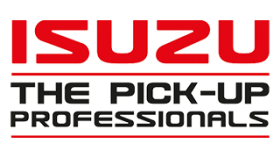Sue Robb of 4Children talks to Julie Laughton and Alison Britton from the Department for Education about the role of childminders in delivering the 30 hours free entitlement.
Fire detection - Suited to the environment?
 A robust fire detection system saves lives. The sooner a fire can be detected, the sooner people can be evacuated. However, perhaps a bigger issue nowadays is avoiding false alarms and the alarm apathy they create. Further reliance is placed on the detection system when this controls an automatic extinguishing solution as unnecessary deployment can be costly, disruptive and environmentally unsound.
A robust fire detection system saves lives. The sooner a fire can be detected, the sooner people can be evacuated. However, perhaps a bigger issue nowadays is avoiding false alarms and the alarm apathy they create. Further reliance is placed on the detection system when this controls an automatic extinguishing solution as unnecessary deployment can be costly, disruptive and environmentally unsound.
What is the risk?
To ensure a fire system is best suited to the environment it is brought in to protect, what is likely to burn and what is going to be the signal that it is burning needs to be considered. Depending on the combustible, the fire’s ‘fingerprint’ could be heat, visible flames, smoke – of varying colours – or any combination of these, including carbon monoxide. Being on the lookout for this ‘fingerprint’ allows detectors to differentiate between normal fluctuations in the environment, e.g. rise in temperature and air flow, and the abnormal such as fire. This minimises false alarms without compromising on accuracy.
For example, the smoke given off by burning paper which may be a significant combustible in public sector offices, is almost invisible to the eye, whereas tyres give off black smoke and electronic components generally produce a whitishgrey smoke. Knowing what combustion products will be generated means the detection can be tuned to the risk.
Effective extinguishing
While detection can mean the fire is readily identified, early deployment of an extinguishant can reduce the amount of fire damage and the consequences on business operations. Many sites will benefit from an extinguishing system using inert gases, such as pure nitrogen, which work well across a range of applications. By displacing air, inert gases flush out a great deal of the smoke and other by-products of combustion (soot, acid gases etc.) so go further to protect the asset as well as aid post-fire recovery, which is crucial in helping minimise the impact of a fire on an organisation.
Protection of assets
Some sites require a more tailored approach. For example, archives such as in libraries and other public buildings, which contain irreplaceable, high value material. Gaseous systems are the most suitable extinguishant in this case, with carbon dioxide perhaps being the most effective but with life safety implications that should not be ignored. Siemens pioneered a mist enhanced gas system, part of the Sinorix range of solutions, which performs better than carbon dioxide and is human safe, making it ideal for such applications. In addition, this system is also suited to generator rooms and similar facilities to avoid the risks associated with CO2. It should therefore be considered for these important areas of public sector buildings.
For sites housing critical computer systems, fire safety systems can be further adapted to minimise damage. The noise created by a gas system discharging can impact modern hard drives, potentially interrupting the very business it was brought in to protect. Siemens has therefore created the ‘Sinorix Silent Nozzle’, which enables effective extinguishing to be implemented, without the issues associated with today’s IT hardware.
Whether an inert gas, carbon dioxide, a watermist solution or chemical agent, customers base their choice on personal
preferences, precedent and the past, their environmental attitude, available storage space, cylinder location, and, of course, cost.
Sadly such decisions are sometimes made on misinformation or outdated technology and this is where a trusted partner, with a broad technology portfolio, is invaluable.
With the public sector facing tight budgets, it can be hard to see the added value of operating an innovative, efficient system will hopefully never have to be used. But with statistics showing that 70 per cent of private sector businesses go into liquidation within three years of having a major fire, it is a clear risk with huge ramifications.
By working in partnership with experts, public sector organisations can be sure to implement the most appropriate option to meet their individual needs
For more information
www.siemens.co.uk/buildingtechnologies
Company Focus
The Isuzu D-Max is a rugged workhorse that can fulfil a myriad of purposes as both a business and personal vehicle. Consequently, the D-Max is a particularly popular choice when it comes to farming, construction, and trade industries. Uncompromising in nature, the D-Max strives to be the ideal companion for many business needs.
Event Diary
UKREiiF has quickly become a must-attend in the industry calendar for Government departments and local authorities.
The multi-award-winning UK Construction Week (UKCW), is the UK’s biggest trade event for the built environment that connects the whole supply chain to be the catalyst for growth and positive change in the industry.
Supplier Profiles
Geo Energy
At GeoEnergy Design, we're on a mission to disrupt the traditional way heating and cooling ha
Latest Features
Professor Harith Alani, director of the Knowledge Management Institute at the Open University explains how AI can be used for good and bad.
Alex Lawrence, head of health & social care, techUK sets out techUK’s Five Point Plan for CareTech.












